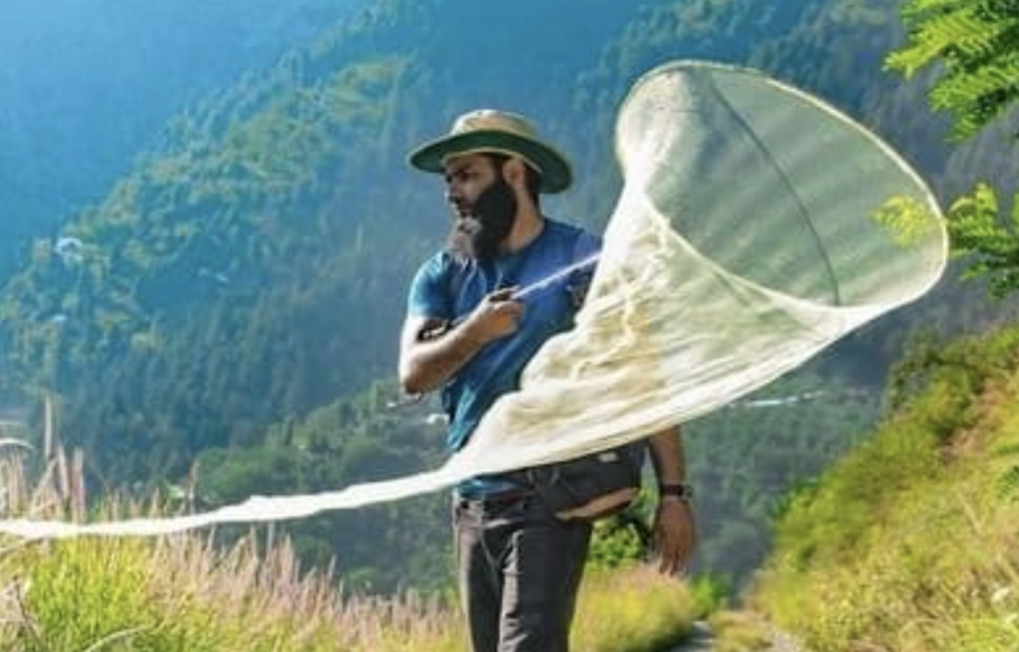
Dr. Amir Maqbool, an accomplished Assistant Professor of Zoology, has made significant strides in the field of photomicrography, earning recognition as the sole individual from Jammu Kashmir to be featured in the prestigious Nikon Small World Competition: The Microscopic Marvels.
His exceptional talent and dedication to capture the intricate beauty of microscopic specimens have not only earned him a place among the competition’s distinguished images but also established him as a trailblazer in the realm of scientific photography.
Dr. Maqbool’s contributions showcase the intersection of art and science, shedding light on the often-overlooked marvels of the microscopic world and exemplifying the importance of visual communication in scientific research.
His achievements not only bring pride to his academic institution but also inspire aspiring scientists and photographers alike to explore the wonders that lie beyond the naked eye.
Dr. Amir Maqbool of Sanat Nagar, Hyderpora, Srinagar, has made history in Kashmir by becoming the first person to be featured in the famous Nikon Small World Competition 2023, making his name in the category of image of Distinction.
In an exclusive interview with the news agency—Kashmir New Observer (KNO), Dr Amir said these photographic curiosities have been a lifelong hangover for him since childhood.
“My father used to be in the seed business. He used to export vegetable seeds from Kashmir to countries outside India. Since there was no such thing as photography in Kashmir at the time, he brought the first DSLR camera back from Bangalore,” he said.
“This was sometime in the 1990s, when I was in the fifth or sixth grade, and it was the first time I had held a camera in my hands. Thus, I began taking wildlife and bird photographs for the first time in 2009.”
“I had an appointment in 2014 in the Zoology Department, University of Kashmir as curator, museum curator. So, I worked there from 2014 to 2017. In 2017, I got an appointment in Higher Education as an Assistant professor. So, the new genre all started at Kashmir University. In 2014, when I got selected in the university, for the curator job the curator’s work is that he has to take care of all the animals there,” he said.
He said: “In Kashmir, we feel that insects don’t have a significant role. There are two reasons for this. Normally, there is no article about insects in our newspapers or magazines. There is no such article about insects, the climate change on insects.”
Dr Amir said that the negative economic importance of insects is that they bite. All these things come to mind and develop negatively. “When we look at it scientifically, the whole world is pollinated. These are called ecosystem drivers. Whether it is pollination. The pollinators pollinate our orchards. Fruits are made, and vegetables are made. The pollination of flowers cannot be done without them. They do the maximum or decomposers. If there is a carcass or organic matter somewhere, if it is not there, then its stink will spread everywhere and it will remain like this or even the dead bodies, which are buried. So the first job is done by insects. They do it in small pieces. Then their maggots and larvae eat it. We have their medicinal uses and almost the whole world is run by them. But one problem is that they are so small that they are not visible,” he said.
In Kashmir, unfortunately, insects are not used as much here. Normally, insects are used according to economic importance.
“In Kashmir, the insects are also facing the impacts of Climate change but Unfortunately, there is no such study,” he said.
“When you have that micro or macro photography, at that level, when those photographs will be in front of you, and something written by them will come in front of you, what it does, what is its function. And it remains preserved for study too. If the researcher uses it or the student, it will help them a lot in studying the pattern of insects, their importance and helps to keep a scientific record of extinct and endangered insects.”
He said: “I did online research on how to do microphotography and joined a group of very talented people on Facebook to get connected and participate in this prestigious competition. When I saw my I was very happy and also I know I couldn’t make it to the top 20 images but still happy that my images list featured in the category of the Distinguished Images list considering that there were around 1,900 entries from 72 countries.”—(KNO)
Author Profile

Latest entries
 REGIONALApril 25, 2025Wooden bridge set on fire in Ganderbal area, locals demand swift action
REGIONALApril 25, 2025Wooden bridge set on fire in Ganderbal area, locals demand swift action REGIONALApril 25, 2025Officials stop illegal construction in Kulgam town following public outcry
REGIONALApril 25, 2025Officials stop illegal construction in Kulgam town following public outcry REGIONALApril 25, 2025Pahalgam attack fallout: Hundreds of Kashmiri students return home
REGIONALApril 25, 2025Pahalgam attack fallout: Hundreds of Kashmiri students return home Representational ImageREGIONALApril 25, 2025‘Alleged cheating in fake coaching center advertisement’: Srinagar Lawyer seeks FIR
Representational ImageREGIONALApril 25, 2025‘Alleged cheating in fake coaching center advertisement’: Srinagar Lawyer seeks FIR
